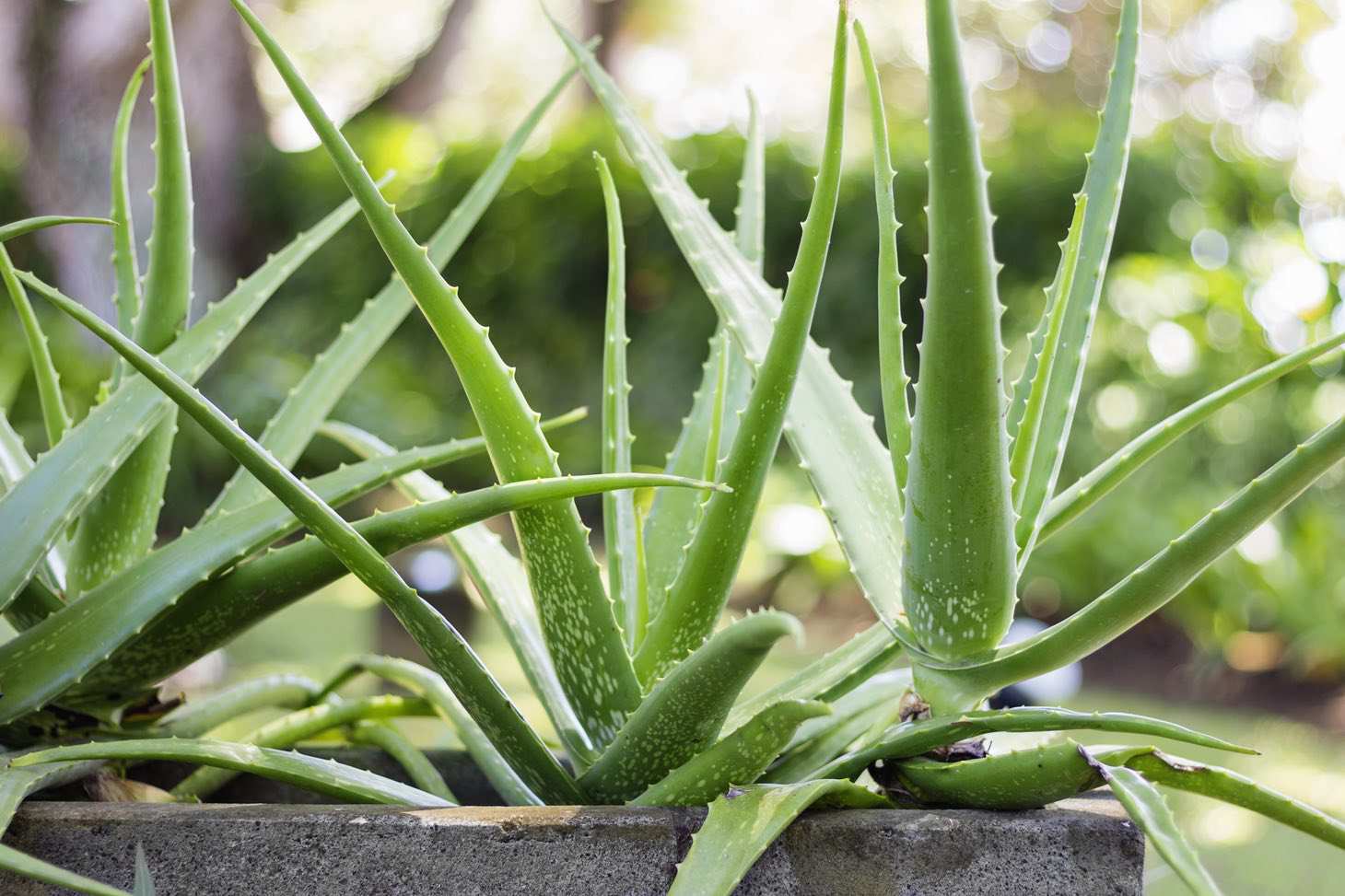Best Soil for Aloe Vera
Are you tired of your aloe vera plants looking sad and droopy? The secret to happy, healthy aloes might be right under your nose – or rather, under their roots! Aloe vera plants are tough cookies, but they’re picky about their soil. They hate having wet feet and need good drainage to thrive.
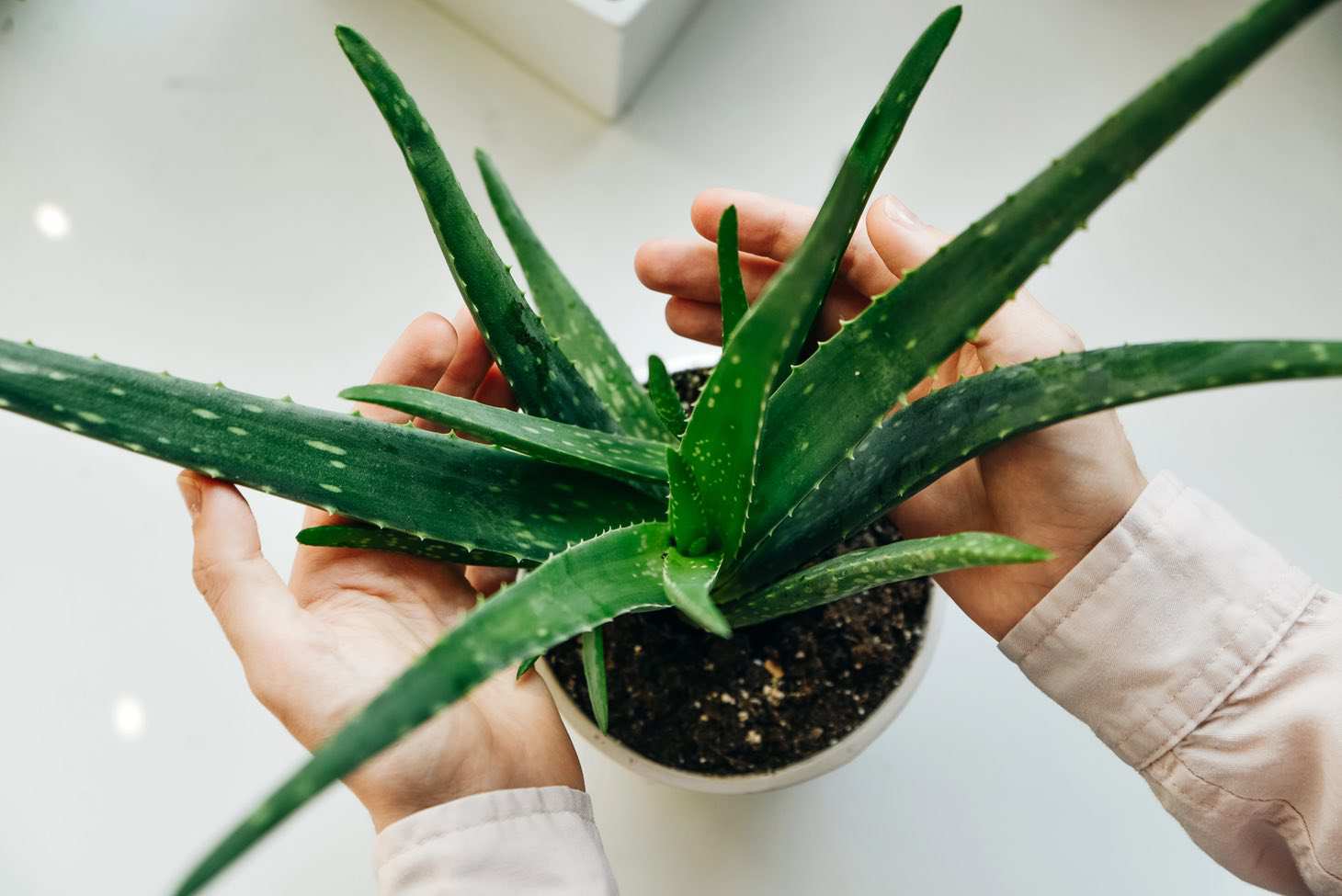
The best soil for aloe vera is a well-draining mix that’s about 2/3 coarse materials. This combo gives aloes the quick-drying environment they crave while still holding onto some moisture and nutrients. You can buy ready-made cactus or succulent soil, or whip up your own mix at home if you have plenty of time to experiment.
Your aloe will also thank you for choosing a pot with drainage holes and not going overboard on watering. A pot that’s just a smidge bigger than the plant’s root ball is perfect – aloes like to be a bit snug. With the right soil and care, your aloe vera will be living its best life in no time!
Why Aloe Vera Needs Special Soil
Aloe vera plants have unique needs when it comes to soil. The right mix helps them grow healthy and strong.
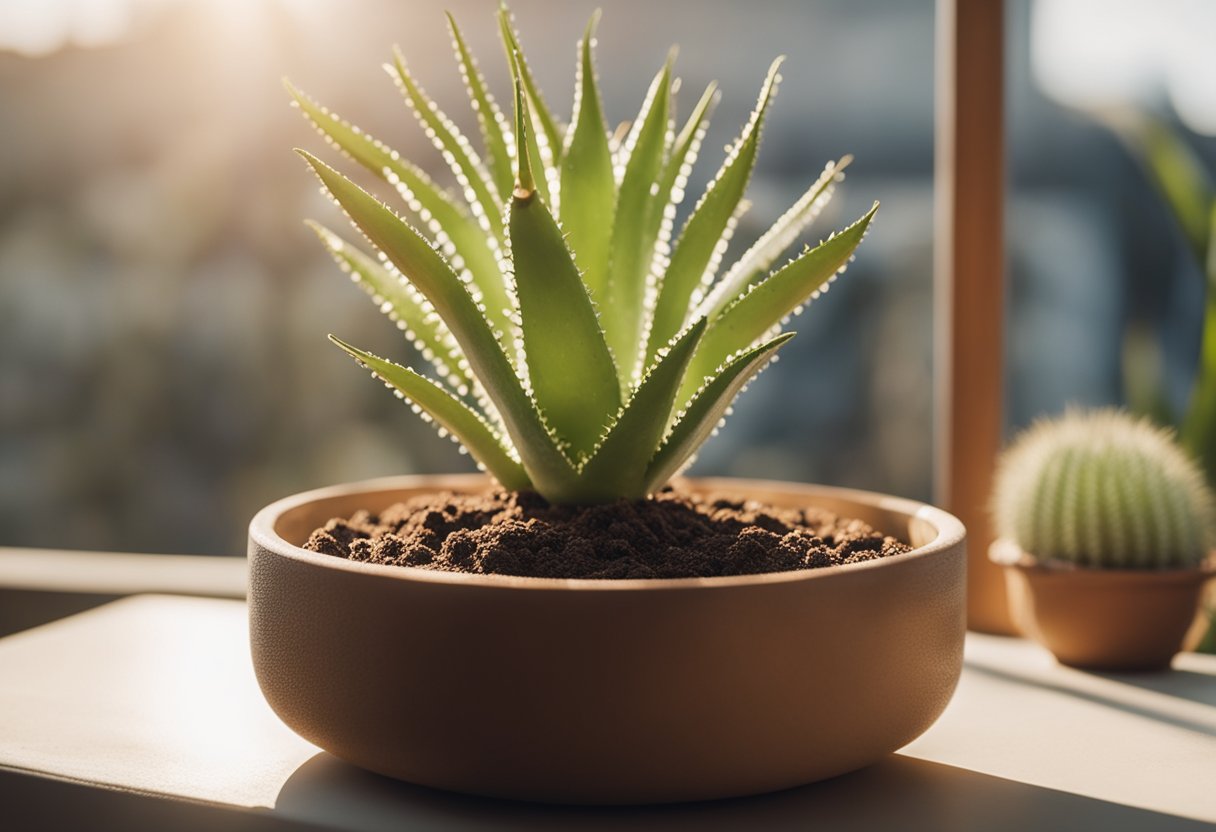
Aloe Vera Plant Characteristics
Aloe vera is a succulent that stores water in its thick, fleshy leaves. It comes from dry, rocky areas. This plant doesn’t like wet feet. Its roots can rot if the soil stays too moist.
Aloe vera grows best in neutral to slightly acidic soil. The ideal pH range is 7.0 to 6.0. This matches the conditions in its natural habitat.
These plants have shallow root systems. They don’t need deep pots or lots of soil. A pot that’s just a bit bigger than the plant works well.
Importance of Proper Soil Composition
The right soil mix is key for aloe vera health. You want a mix that drains quickly but holds some nutrients.
An efficient aloe mix allows excess water to drain fast. It also gives roots room to breathe. Adding a bit of compost can boost nutrients.
Using the right soil keeps your aloe vera happy. It prevents common problems like root rot and helps the plant thrive.
Components of the Ideal Aloe Vera Soil
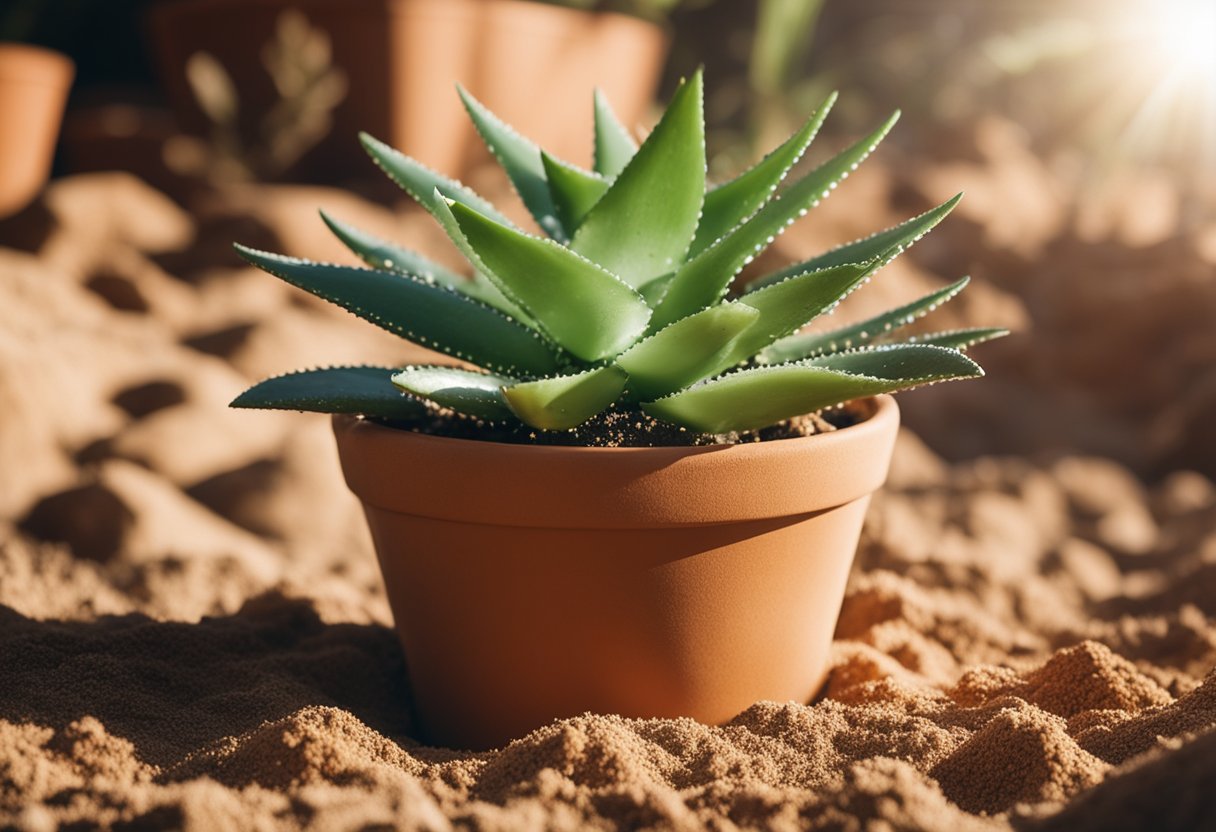
The perfect soil mix for aloe vera plants combines key elements to support healthy growth. A good blend balances drainage, moisture retention, and pH levels while using the right mix of materials.
Organic vs. Inorganic Materials
Your aloe vera soil should have both organic and inorganic materials. Organic stuff like tree bark or compost adds nutrients. Inorganic materials like large sand particles, lava stones or perlite help with drainage but contain no nutrients on their own.
A good mix is about 75% inorganic and 25% organic.
This combo gives roots air while holding just enough water. The organic part feeds your plant slowly over time.
Drainage and Water Retention Balance
Aloe vera likes soil that drains fast but still keeps some moisture. You want to copy its desert home conditions.
Add chunky stuff like small gravel or bark chips. This makes air pockets in the soil. About 1/4 inch size works great.
You can mix in some vermiculite too if you have some. It holds onto a bit of water without making things soggy. I’ve used plenty of vermiculite in the past only because I had a gigantic bag of it and wanted to use it up. Vermiculite will make the soil lighter and allow for a small amount of aeration but it also holds onto water strangely enough.
pH Level Considerations
Aloe vera grows best in soil that’s a little bit acid. Aim for a pH between 6-7.
Most potting soils are already in this range. But you can test with a cheap pH meter to be sure.
If your soil is too acidic, add some garden lime. This raises the pH. Just a sprinkle will do.
For soil that’s too alkaline, most organic materials will lower the pH.
Check the pH every few months. Watering can change it over time.
Creating Your Aloe Vera Soil Mix
Making the right soil mix for your aloe vera is key to keeping it healthy. You can make your own mix at home or buy a ready-made one from the store. Both options can work well if you know what to look for.
Homemade Mix Recipes
You can easily make aloe vera soil at home. Mix equal parts potting soil, coarse sand, and perlite. This gives your plant good drainage. Add a bit of compost for nutrients.
Another recipe uses 2 parts potting soil, 1 part perlite, and 1 part coarse sand. Throw in some small rocks or gravel to help with drainage.
For a richer mix, try 1 part potting soil, 1 part coarse sand, 1 part perlite, and 1 part compost. This gives your aloe vera extra food.
Always make sure your mix feels gritty and drains well. Wet soil can hurt aloe vera roots.
Commercial Soil Mixes Suitable for Aloe Vera
If you don’t want to make your own, you can buy soil for your aloe vera. Look for mixes labeled for cacti and succulents. These often have the right drainage for aloe plants.
These mixes usually have variable sized particles, and other stuff that helps water drain fast. They also tend to be a bit acidic, which aloe plants like.
You can improve store-bought mixes by understanding what is in the soil and how to amend to it to get the results you want. I have spent 2 decades experimenting with various soils for all kinds of plants. If you have the time, it can we a worthwhile learning experience.
Maintaining Soil Quality for Aloe Vera
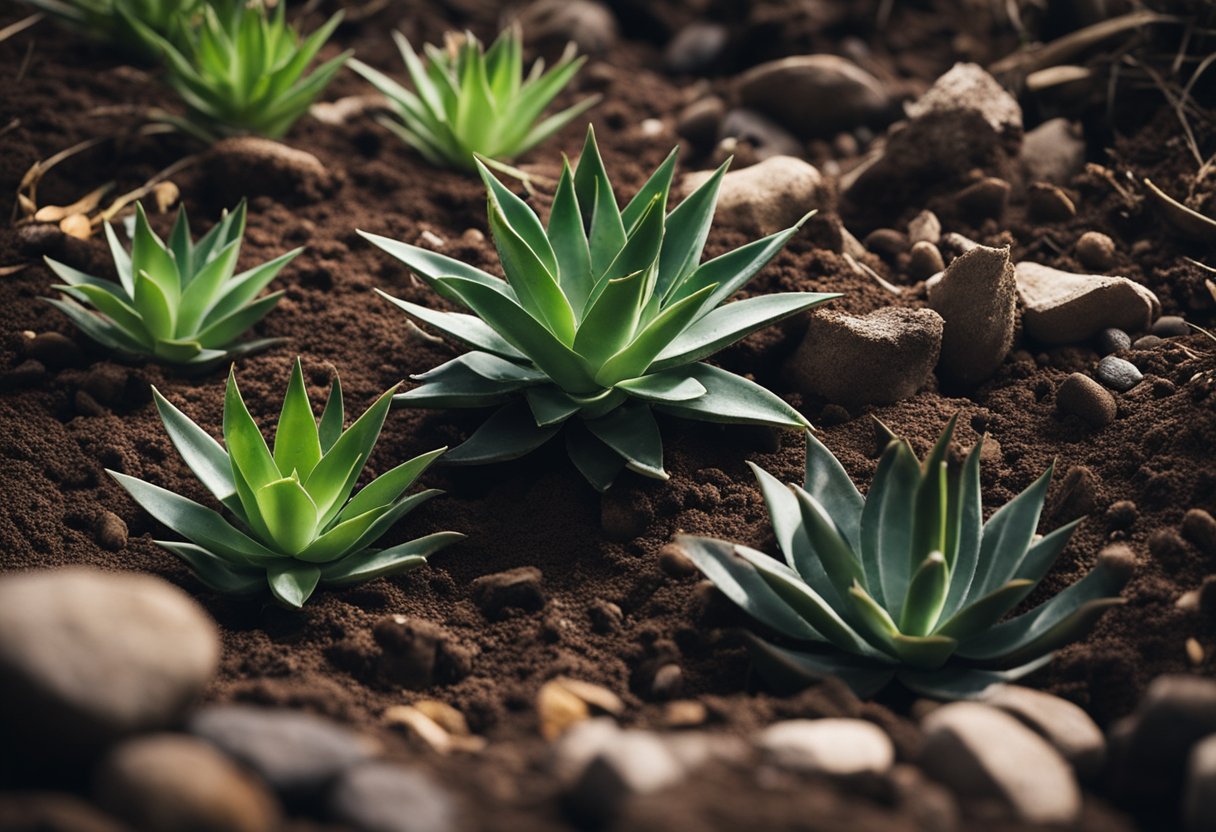
Good soil is key for healthy aloe vera plants. Let’s look at how to keep your aloe’s soil in top shape.
Watering Practices
Water your aloe vera sparingly. Water thoroughly but only when the soil needs it. These plants don’t need much water. Let the soil dry out completely between waterings. In winter, water even less.
Check the soil before you water. Stick your finger about an inch deep. If it’s dry, it’s time to water. If it’s damp, wait a bit longer.
When you do water, do it thoroughly. Let water drain from the pot’s bottom holes. This helps flush out salts and keeps the soil fresh.
Fertilization Tips
Aloe vera doesn’t need much fertilizer. Too much can harm the plant. Use a balanced, water-soluble fertilizer made for succulents.
Fertilize only during the growing season, spring to fall. Do this once a month at most. Dilute the fertilizer to half strength.
Stop fertilizing in winter. The plant is dormant and doesn’t need extra nutrients then.
If your aloe looks pale or grows slowly, it might need more nutrients. Try a light feeding and see how it responds.
Repotting and Soil Refresh Guide
You’ll probably need to repot your aloe every 2-3 years. This gives it fresh soil and more room to grow. Choose a pot just a bit bigger than the current one.
Make a fresh soil mix when repotting. Use a good succulent soil or make your own.
Gently remove the plant from its old pot. Shake off excess soil from the roots. Place it in the new pot with fresh soil.
After repotting you can water it in as normal.

